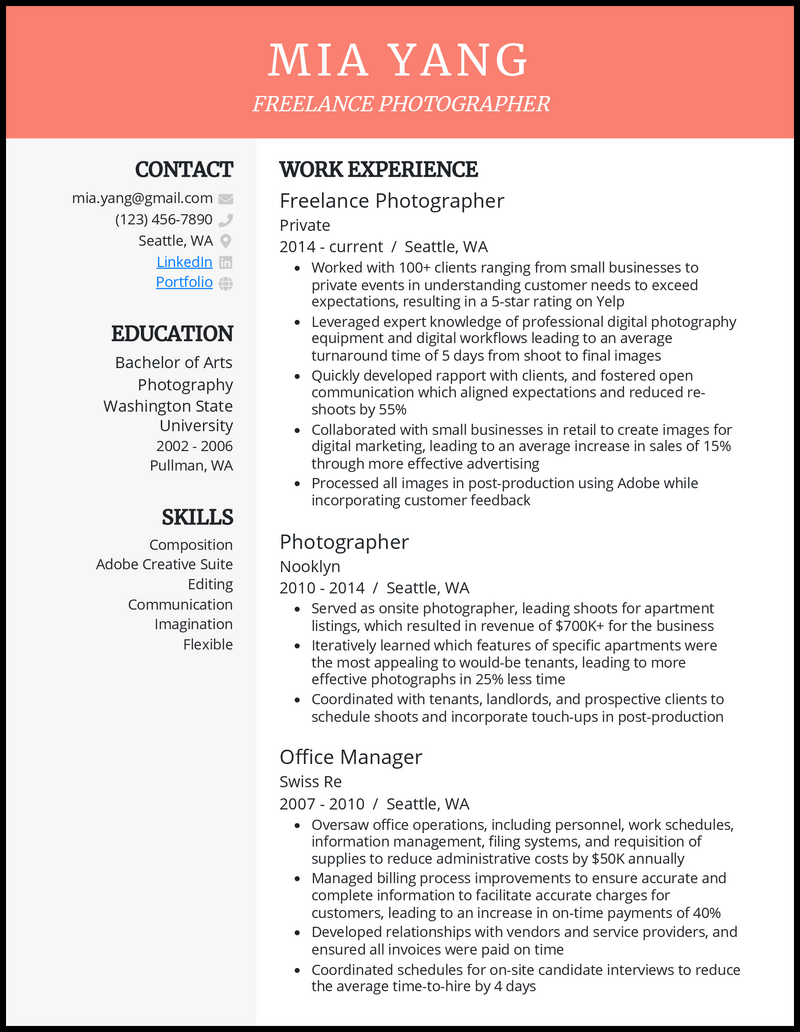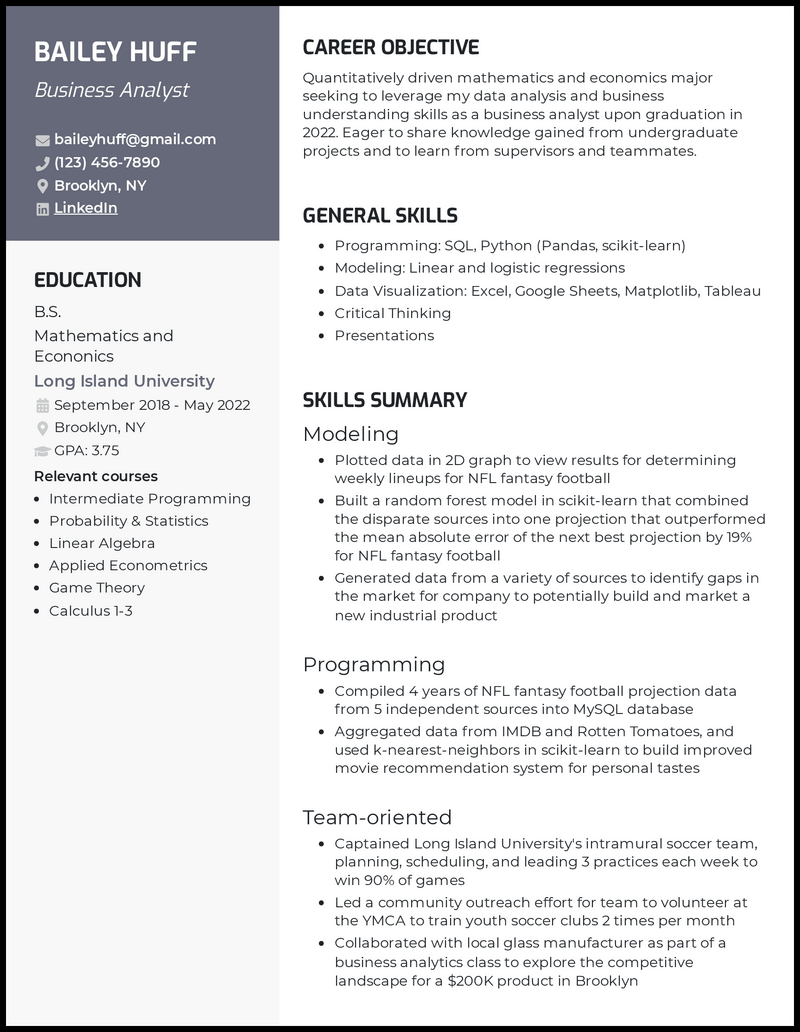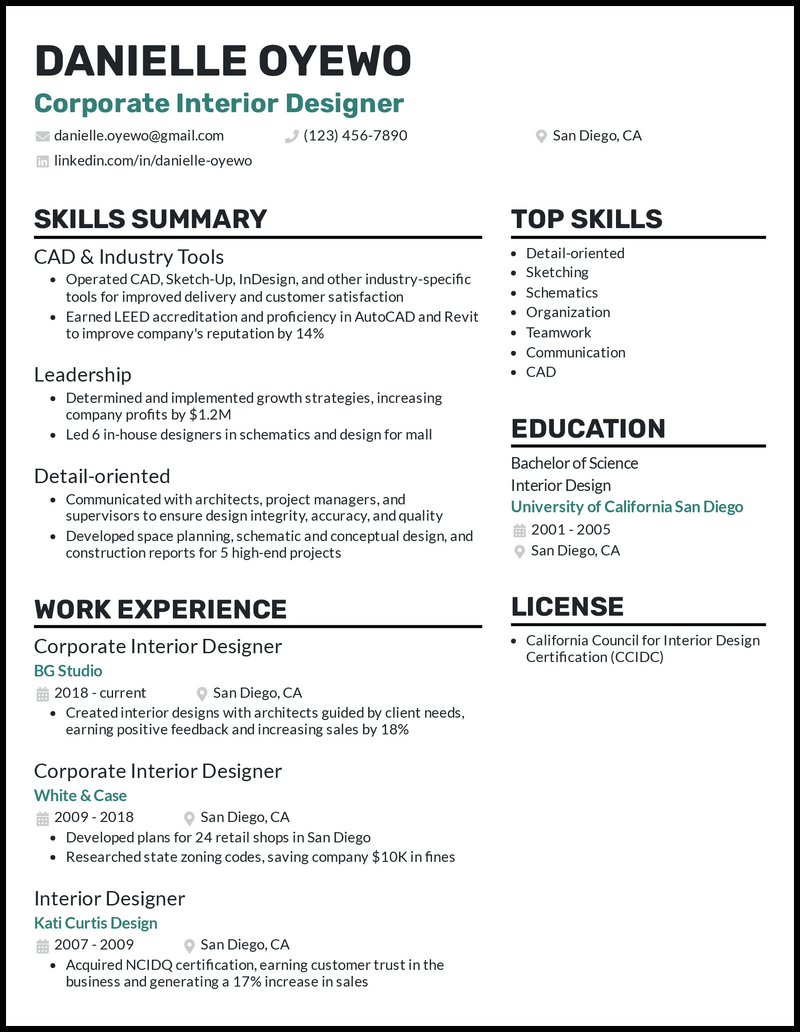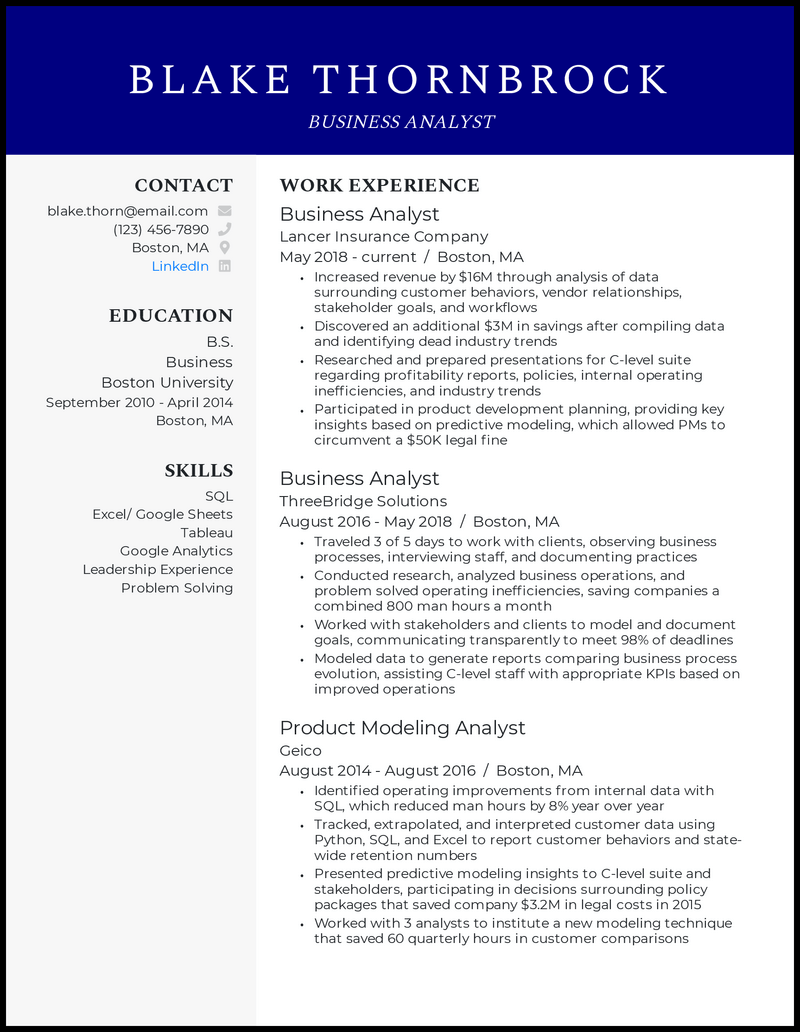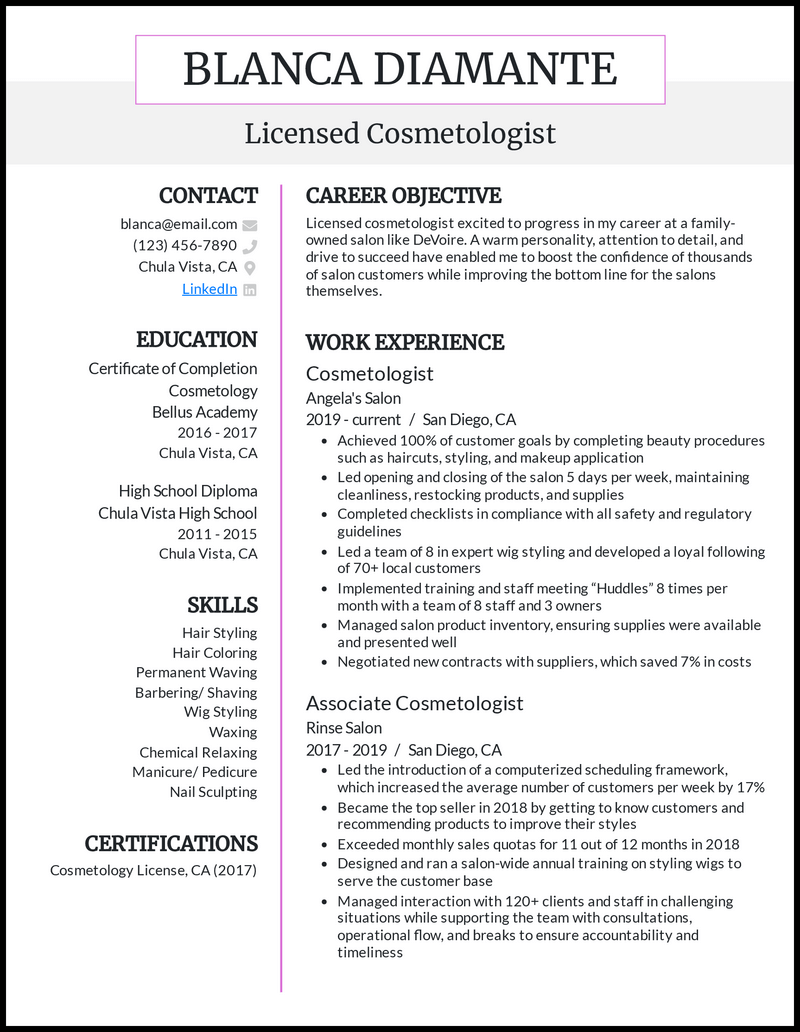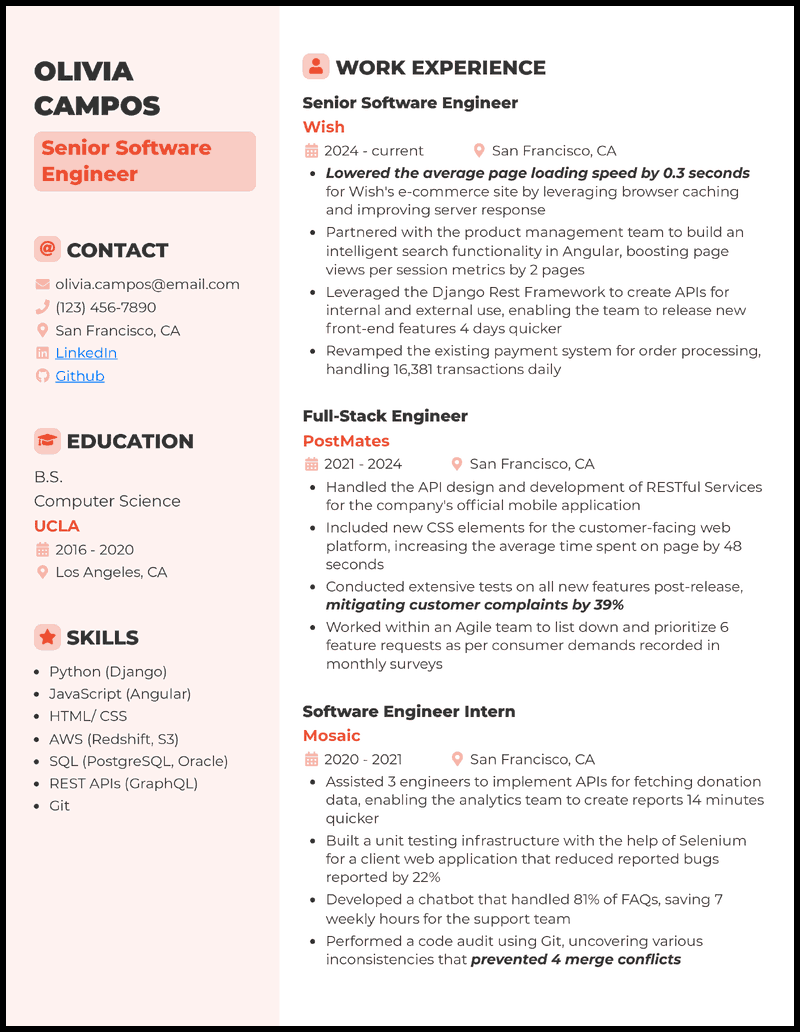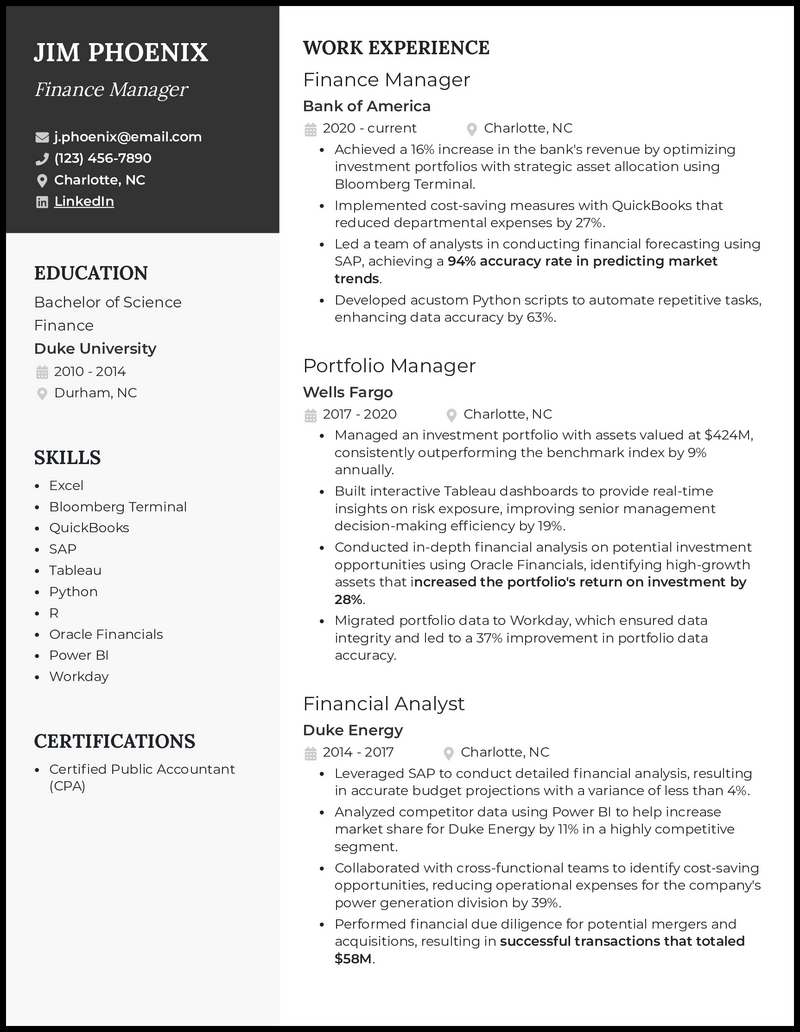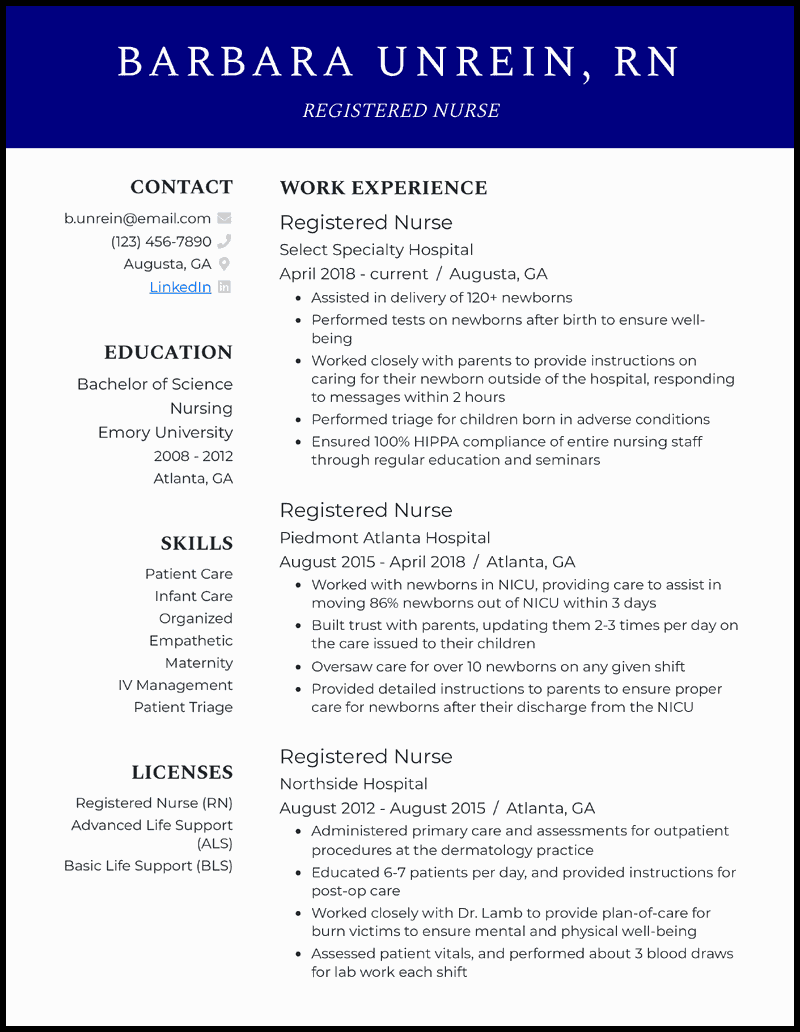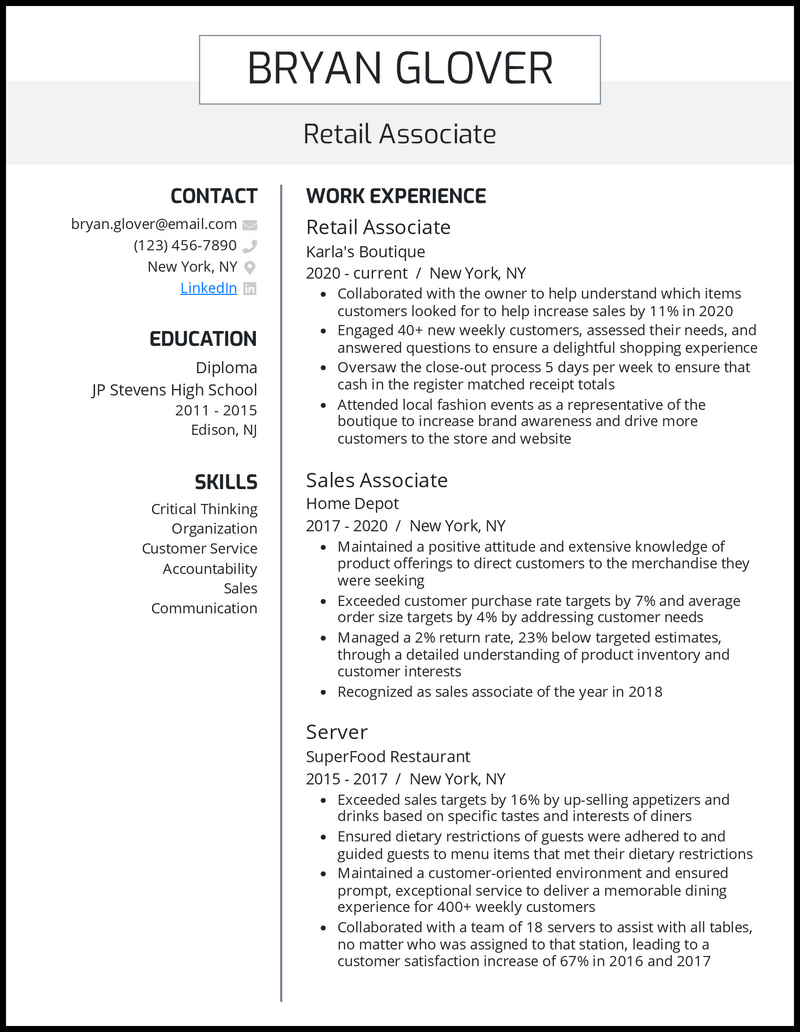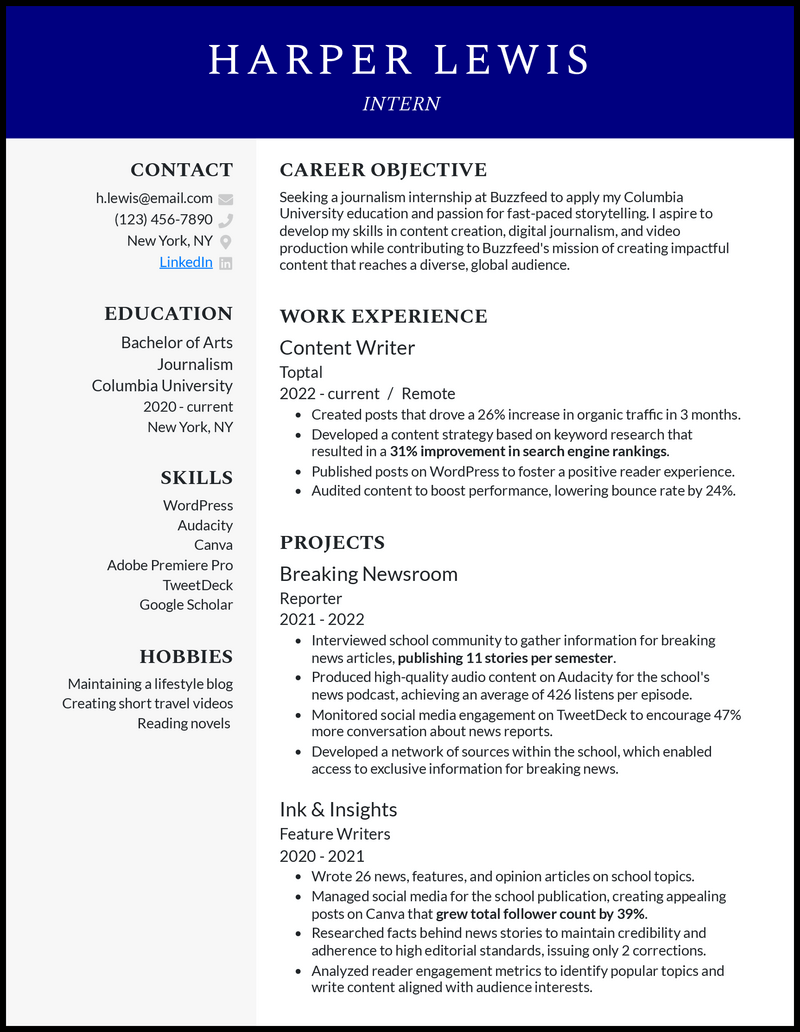Resumes are essentially a professional self-introduction—they say only the most important things, and only in the most concise way.
We use them to try and grab the attention of employers, to show them the value we have to contribute, and to convince them to reach out to us to find out more. In other words, resumes are an indispensable tool for any job hunter.
This means, of course, that your resume needs to be as effective as it possibly can be—and we know how to help you achieve that. With this detailed guide and our plentiful resume examples, you can craft a resume that will leave you drowning in interview offers!
The Essentials of a Resume

Resumes detail a range of information about you, your skills, and your professional history. You choose what to share, and the idea is to make yourself look as good as possible. It’s the first thing an employer sees, and often the only thing they’ll see before making a decision on whether to reject you or advance you to the next stage of the application process.

Definition and purpose of a resume
A resume is a concise physical or digital document that provides a summary of your education, work experience, skills, achievements, and qualifications. Its purpose is to show off your suitability for a role and convince employers to invite you for an interview. The main sections of a standard resume include:
- Contact information: Your full name, email address, phone number, social media links, and any other relevant contact information.
- Professional objective: This is an optional section highlighting your career objectives, skills, and qualifications.
- Work experience: This is a list of your previous jobs, complete with multiple bullet points detailing your responsibilities and achievements.
- Education: A short section listing your educational qualifications, what schools you attended, and what you studied.
- Skills: A list of technical (and sometimes soft) skills that are relevant to the job you’re applying for.
- Certifications and licenses: If you work in a profession that requires a license, you can list it here. You can also include certifications you’ve earned in relevant subjects.

The evolution of resumes over time
The word resume comes from the French “résumer,” which means “to summarize.” In other words, being clear and concise is truly the primary goal! People like to say that Leonardo DaVinci created the first resume in 1482 when he wrote to a potential employer, the Duke of Milan, and showcased a specific selection of his skills that aligned with the Duke’s needs.
At this point in history, resumes were more like what we call cover letters today. They were written as formal correspondence in full sentences—no bullet points! Slowly but surely, this transformed into the resume we know today. They were considered standard practice by the 1950s, and the one-page resume formats we’re used to today became common once people had access to computers to create them.
Nowadays, the classic resume document is still going strong, but we also use new platforms like social media to show off our skills and knowledge. Some jobs also make use of video resumes, where candidates can give self-introductions and demonstrate their skills.
Key Components of a Resume

One of the trickier parts of resume building is knowing what to include. There’s a decently long list of things you definitely need to have on there, but an even longer list of things you ought to leave out. Let’s go through the basic elements that should be included in any resume you write.

Contact information and header
Contact information is usually displayed under your name. A standard format is:
- Your name
- Your job title
- Your email
- Your phone number
- Your location or address
- Your social links
You can present this information in a few different ways: in the top corner of the page, as a centered title, as a colored header, etc. Usually, you’ll write your name as a title, your job as a subtitle, and the rest as body text.

Professional experience and achievements
When you list your work experience, you need to include the company name, the position you held, the dates you worked there, and where it was located. Underneath, you’ll write the bullet points often referred to as your “work responsibilities.”
This is where you show off everything you achieved and brag about all the responsibility you were given while you worked there—in a professional manner, of course. The trick to pulling it off is numbers.
Quantify your achievements with exact metrics to make it clear just how impressive they are. Like this:
- Developed automated testing suites, reducing bug occurrences by 33% and increasing release frequency by 57%
- Mentored junior developers, resulting in a 22% improvement in code quality and a 31% reduction in onboarding time for new team members

Education and certifications
This is a much simpler section. It might sound disappointing considering all the time and work you put into it—but no one really needs to know the details of your education. Your school, your degree subject, and maybe the date you graduated are all you need to include. Simply tuck them away in a convenient corner where they take up as little space as possible.
Certifications are similar; while you should definitely include them, they don’t need any details. Just list the certifications you have with no extra information, or, at the most, add the date you earned it.
Where you place your education and certifications depends on how important they are to your resume. For instance, if you’re a recent graduate with limited professional experience, your education and certifications should probably be near the top of the page. For an experienced professional, it’s fine to put them at the bottom.
Types of Resume and When to Use Them

Most resumes you see are “chronological resumes,” but there are actually two other types of resume formats you can choose to follow. One is called the “functional resume,” or sometimes the “skills-based resume,” and it focuses on skills rather than work experience. The other type is the “combination” resume, which puts equal emphasis on both skills and work experience.
Each one has different strengths and weaknesses, and it’s important to use the right one for the job—so let’s make it clear what each does and when you should use it.

Chronological resume
This is the most common resume format, and you will almost definitely use it at some point in your career. It’s also fairly likely that you’ll only use this type of resume. The bulk of the space is used up by your previous work experience, which is listed in chronological order—your most recent job at the top.
Each past job should include four to five bullet points detailing your primary achievements. Each bullet point should be one sentence, so the overall word count will probably settle between 50 and 70 words. If you’ve had a lot of jobs, it’s customary to include the three most recent—any more than this and you’ll run out of space for your bullet points.
Sections like skills, interests, education, and certifications all share around the same amount of space on the page and are usually formatted as short, simple lists. It’s not that they’re unimportant, it’s just that your work experience is extremely important. Rest assured, however, that you’ll likely get the opportunity to discuss everything at length during the interview!
Here’s an example:

Functional resume
Functional resumes are much, much less common. They have a very specific purpose, which is to help people who are changing careers or have gaps in their employment history create a resume that doesn’t feel half-empty.
The trick is to simply focus on your skills. Instead of work experience, a skills summary takes up the bulk of the page space and details examples of your skills and times you’ve applied them. This allows you to draw from non-traditional experiences, such as personal projects, freelance projects, internships, part-time jobs, and even school projects. Basically, the emphasis is on what you did, not where you did it.
Below, you can include certifications, software competencies, education, and a small work experience section that simply lists any jobs you want to include without any details.
Here’s a simple example:

Combination resume
The combination or hybrid resume format is simply a blend of the chronological and the functional formats. It offers flexibility for people who don’t have quite enough work experience to go full-chronological but do still have one or two previous jobs they want to write about in detail.
As you might expect, a combination resume includes both a skills summary section and a work experience section. It makes sense to start with the work experience section and write out your bullet points detailing your achievements. Then, you can use the skills summary to cover any skills you didn’t get to mention in the work experience section.
Here’s what a combination resume might look like:

Resume examples by profession
As we move from discussing different resume types to examining specific examples across professions, it’s essential to recognize the resume’s role as a strategic tool tailored to meet job market demands.
The resume examples by profession will showcase how various professionals adapt their resumes to highlight unique qualifications and skills. This practical demonstration will provide valuable insights, helping you understand how to effectively present experiences to stand out in your respective field.
Do’s and Don’Ts of Resume Writing

The “don’ts” of resume writing can actually be pretty hard to adhere to. Mistakes like adding too much detail to the wrong things, including irrelevant information, and using the wrong language are all very easy to make.
The best way to avoid them is to learn exactly what these mistakes look like, so you can recognize them in your own resumes. You can also use tools like resume builders and resume checkers that help cut down on the time required checking.

Best practices for resume content
The first tip is to plan out your resume sections. Think about how many skills you want to include in your skills list, how many certifications you have, and how many past jobs you’ve had. This way, you can figure out which sections you need the most space for and find a resume template that fits your needs.
When it comes to writing your work experience bullet points, be ready to do some research. You likely don’t have exact metrics on hand, but that’s no excuse not to find some! Using specific numbers gives hiring managers a much clearer impression of the value you could bring to their company—and, frankly, it just sounds more impressive!
You also need to make sure your bullet points align with the job you’re applying for. This means reading through the job description, pinpointing the skills, software, and knowledge it mentions, and including them in your bullet points. For example, the job description for a UX designer job might mention software like Sketch or Adobe XD—if you’ve used these before, you definitely need to include them in your bullet points.
One other thing to include in your resume is soft skills. These can be tricky because listing them in your skills list isn’t very convincing. You need to demonstrate that you have leadership skills, for example, not just write it down. You can do this by mentioning accomplishments that your soft skills played an obvious role in—such as mentorship or leading a team.

Common resume mistakes to avoid
The biggest things you absolutely must avoid when you create your resume are typos, spelling mistakes, and grammatical errors. Whether writing is your strong suit or not, you need to make sure it’s completely mistake-free.
Needless errors can give employers a terrible first impression. It doesn’t matter why the mistake happened; the problem is that you didn’t take the time to fix it. If you aren’t a confident writer, always remember that you can rely on tools like Grammarly. In fact, even if you are a confident writer, you should still run a grammar check!
Clarity is also very important when it comes to resumes. Because everything is written in lists and bullet points, simplicity is your friend. Use the language you need to communicate your point as clearly and simply as possible and stay away from complex language. To clarify, complex language includes things like obscure verbs, multi-clausal sentences, long adjectival phrases, and things like that. Technical jargon that’s related to your job is totally fine.
The best tone for a resume is factual and neutral. While your goal is to show off your skills, you shouldn’t come off as boastful or overly confident. You should also avoid things like humor or sarcasm because it’s just not the right place for them. You can show off your personality in the interview, instead.
Resume FAQs

Resumes should always fit on one page, and use a 12-point font for the body text. You shouldn’t let yourself leak onto a second page, and you shouldn’t make the font smaller so you can squeeze more on. Following these rules shows that you know standard professional practices, and it shows courtesy to the hiring managers who have to read large numbers of resumes.
If you don’t have enough experience to fill a normal chronological resume, you can consider using a combination format. This allows you to include the work experience you do have, and then fill the leftover space with a skills summary where you can include times you applied your skills outside of professional work.
Ideally, you should update your resume for every job you apply to. They’re usually just small tweaks, like swapping out a work experience bullet point or changing the order of your skills list to better reflect the needs of that particular job. For larger changes, just update your resume every time you get a new job or learn a new skill.
Technically, you can. However, you shouldn’t! Tailoring your resume to each individual job is a highly effective way to pass through ATS and get noticed by hiring managers. The more perfectly you match what they’re looking for, the more likely you are to get attention.
There’s no need to include references on your resume because they’re just not needed until later stages in the application process. This means they’d just be taking up precious space for no use. However, you can add a line at the bottom of your resume saying “References available on request.” This shows that you have the references ready to go, and it also looks pretty professional.
Cover letters are not obligatory but it wouldn’t be a lie to call them necessary. They give you extra space to include things you couldn’t fit on your resume, and they give you a chance to directly address the employer and share your thoughts about their company and how you want to contribute to it. Of course, this means that every cover letter you send needs to be unique, and that can be a lot of work! Unless, you use a cover letter generator.





